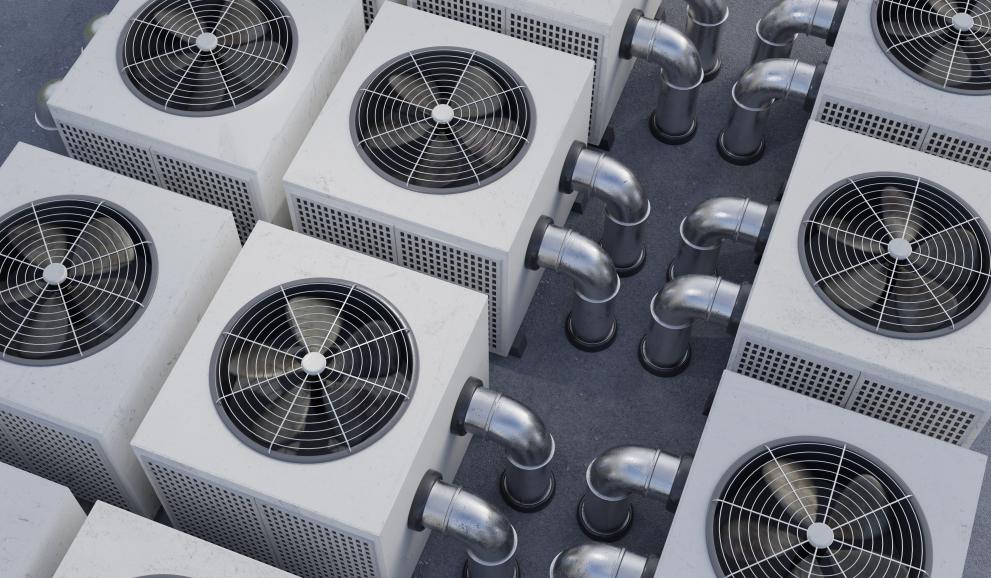Heating and cooling systems remain a major source of air pollution across the continent. The JRC study highlights the urgent need to accelerate the uptake of cleaner, more efficient and renewable technologies in this sector.
Air pollution remains a major environmental problem in the EU, with the heating and cooling sector contributing significantly to the release of harmful pollutants. These emissions include 73 % of particulate matter (PM2.5), 33 % of nitrogen oxides (NOx), 2 % of ammonia (NH3), 18 % of non-methane volatile organic compounds (NMVOC), 61 % of carbon monoxide (CO) and 49 % of sulphur dioxide (SO2) - all of which pose serious health risks. Buildings and our homes are a major source of these pollutants.
Following the revision of the Ambient Air Quality Directive, several Member States will need to make additional efforts to meet the more stringent air quality targets for 2030, as the EU has brought its standards more in line with the World Health Organisation (WHO) recommended air quality levels.
In this situation, correctly identifying the causes of air pollution is essential for selecting and recommending cleaner alternatives to current practices.
Despite the gradual shift towards less polluting energy sources for heating in the EU, polluting combustion plants still dominate the energy mix and, according to a JRC study, will account for 97 % of heat production in 2022.
Over the last two decades, progress has been made in the quality and efficiency of European heating. While the total gross final energy consumption (GFEC) in the EU27 in 2022 (the latest data available at the time of the study) will decrease by 9.5 % compared to 2005, consumption for heating and cooling has fared better, decreasing by 16 % over the same period. This is partly due to lower energy demand for heating buildings and partly due to more efficient heating appliances.
The use of heat pumps, which do not emit any direct pollutant emissions, has increased sixfold since 2005 and currently accounts for 3.7 % of gross final energy consumption. Although the heating and cooling sector will reach 25% of renewable energy in 2022, heat pumps still represent a relatively small share, contributing only 15 %.
Emissions of pollutants from heating are dominated by the domestic sector (85 % PM2.5, 82 % NMVOC, 79 % ammonia and 76 % CO), indicating the need to set stricter pollutant emission limits for appliances sold for use in this sector. The analysis shows that this is particularly relevant for biomass in the case of PM2.5 and gas and biomass in the case of NOx.
Building on previous research on small-scale combustion and ongoing efforts to improve estimates of air pollutant emissions in the Emissions Database for Global Atmospheric Research (EDGAR), the study pinpoints key factors affecting emissions:
* the type of fuel used (e.g. natural gas, wood, oil, pellets or electricity),
* the technology used (e.g. stoves, chimneys, boilers or heat pumps),
* the overall efficiency of these systems.
National energy and climate plans
The study also analysed both the 2019 National Energy and Climate Plans (NECP) and the draft 2023 NECP, which outline how EU countries intend to meet their energy and climate targets by 2030. The findings point to an increase in renewable energy targets.
For example, Sweden aims to further increase the share of renewable energy in heating and cooling compared to the share in its 2019 NECP and to reach a share of 73 % by 2030, while Denmark, which aims to reach a share of 77 %, shows the largest increase in percentage points (17 p.p.) when comparing the two submitted NECPs.
However, twelve Member States still do not meet the new EU requirements and many countries still expect a share of renewables below the expected level in 2030. The Commission has issued recommendations on the draft updated NECPs, including the possible need to increase the renewable ambition. Member States are now finalising their NECPs in the light of the Commission's recommendations.
Heat pump use is projected to increase by 22 % by 2030 based on the NECP's 2023 proposals, while biomass heating projections have increased only slightly, with some countries lowering targets due to air quality concerns.
These findings highlight the complex and multifaceted challenge for EU efforts to balance energy needs with air quality and decarbonisation objectives.
While progress has been made in the deployment of renewables and energy efficiency, the continued reliance on fossil fuels and biomass in heating systems poses a persistent risk to air quality.
The EU has adopted a comprehensive strategy to combat air pollution, combining regulatory measures, strategic initiatives and a strong focus on renewable energy and energy efficiency.
The updated EU energy framework, reflected in the recent revisions of the Renewable Energy Directive, the Energy Efficiency Directive and the Energy Performance of Buildings Directive, together with the Clean Zero Industry Act, provides a strong political signal to promote clean heating solutions. It encourages the introduction of efficient district heating and heat pumps, while setting the path towards phasing out fossil fuel boilers.
Europa.eu/ gnews.cz - RoZ



